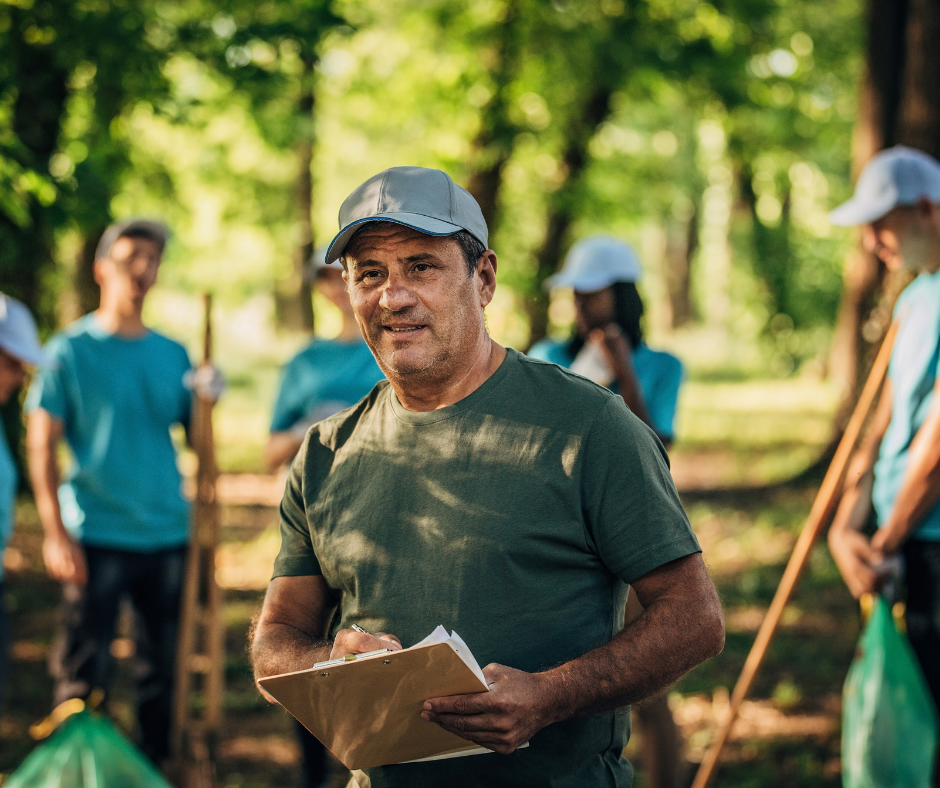Training and Induction
The first few days of volunteer participation are vital in establishing a positive and mutually beneficial volunteer relationship. Use these steps to make sure your volunteers feel welcomed, included and capable in their new role.


First Impressions are everything!
Before their first shift, communicate all the details of their first shift. Or you may like to include this information in a volunteer handbook, which you provide before their first shift.
Ask how they would like this information communicated – text, email, phone call etc. Include:
- Address of the volunteer role
- Start and finish time.
- Parking or public transport details
- What to wear – including any covered footwear etc.
- What to bring – e.g., food / drink etc.
- Details of the person they need to contact if they can’t make it

Greet and welcome your volunteers when they first arrive at their shift. Make sure someone (either yourself or a designated staff member or volunteer) is the official “Welcomer” to any new volunteers. Check out our useful check list about a volunteers first day.
You may also consider matching up new volunteers with existing volunteers for their first few visits, to show them how tasks are carried out and be a friendly face.

Create a welcome pack or volunteer handbook
The handbook should include:
- start and finish time.
- A clear description of their role.
- tasks, the order in which they should carry out/prioritise tasks, how tasks are undertaken.
- who to talk to about different things that may arise while they’re volunteering (questions about role, or if there’s an issue)
- an outline of your organisation, what you do, your history, your services etc.
- photos with names of key staff members and volunteers
- a map of your facility with the areas the volunteer will be using highlighted (including bathrooms)
- any relevant policies and procedures
- Training requirements
- Volunteer rights and responsibilities, including code of conduct and others check out our resource pages for examples
You may need to allocate some time to go through any paperwork with the volunteer. If you don’t have time, provide an option of taking forms home (reading policies, signing forms) where they may ask a friend or family member to help.
Having easy-read versions of important documents is very helpful, for all sorts of volunteers with various literacy levels. You could provide this before their first shift, or on their first day. Check out our Easy English resources.

Find a training and induction method that suits the volunteer
Training and induction are often part of a volunteer’s onboarding. Volunteers are more likely to continue volunteering if they know what their role is and what is expected of them.
If you’re using a video try to include closed captions and plain English (this is great for people with low language, hearing impairment, and if English is not someone’s first language). Check out our accessible WHS videos. These are suitable for everyone, not just people with a disability!
You may already have existing standard training modules. If these are online, can you provide an option for volunteers to complete them at home, with support from a friend or family member? Some people might not feel comfortable telling you up front that they have low literacy. Perhaps ask “Would you like to complete these now, or shall we send you a link to an email so you can complete them at home before your next shift?”

If your training is provided in house and face to face, you could consider making it more accessible by:
- Buddying them up with another new volunteer, or existing one – during the training.
- Providing printed slides of the content, so they can revisit it at home, with someone who can help them understand.
- Film the training and provide the video for the volunteer to watch again at home.
- You may like to follow up training with a survey. This will help you identify ways to improve this part of your volunteer program. You can find a template here.
